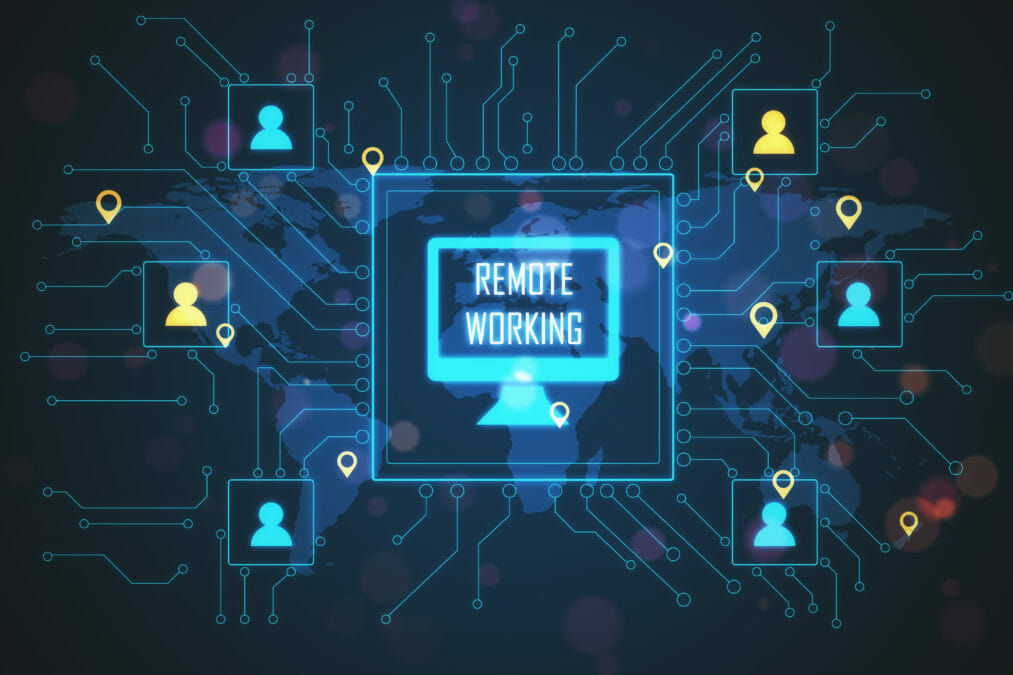Given the impact that Covid-19 has had on our professional lives, especially the various lockdowns and restrictions, the use of artificial intelligence (AI) will continue to be the core technology that drives business efficiency and productivity. This is particularly true in regards to facilitating remote working for employees and improving talent engagement for employers.
In order for businesses to set their teams up for success, they must ensure that they are providing the best and most strategic technologies, as they strive to achieve the common goal of the organisation.
This is however not just about productivity and efficiency for the business. This is about improving the employee experience. Remote working and working from home (WFH) means that employees are now siloed from their teams with no face-to-face contact. As a result, we potentially lose the benefit of collaborating over coffee, shadowing colleagues and impromptu breaks to manage stress.
UK tech sector balances the pros and cons of remote working
There are of course many significant benefits to remote working. Employees can work where they want, when they want, and employers have access to a global pool of talent. In order for both parties to achieve maximum productivity, businesses need to not only embrace new ways of working, but also facilitate and improve the experience for their teams and enable a better work life balance. And AI supports this shift.
On the face of it, the idea of AI conjuring images of robots and opaque black boxes of algorithms seems incompatible with these challenges. However, there are viable opportunities for creative and impactful AI applications that help address these risks head on.
The key to allowing this to happen is for companies to embrace cloud-based work management and collaboration systems. With such a system in place and under constant use, AI technologies can learn more about your team, the work they are doing and how they are interacting with their colleagues. This is what I call being AI-ready.
Naturally, it takes an insightful party who can identify an issue or a pattern of issues that relate to remote working. This could be in regards to employee productivity, efficiency or satisfaction. This party must also be empowered by the possibilities presented with machine learning to really join the dots and define the problem.
This raises a pertinent example. What is the relationship between an individual’s use of instant communication and productivity? If your company is using a communication tool like Slack or Microsoft Teams and conducting performance reviews within a cloud-based platform, this hypothesis can be tested. If it’s proven to be accurate, this is a pattern that can be tracked against all members of the team.
In terms of improving talent engagement, rudimentary AI algorithms, such as psychometric or competency testing, have been used for decades to try to gain a deeper understanding of individuals. For example, how they fit into specific roles or work on specific teams. The data being fed into these tests is captured right at the point of testing; it’s a tiny window into who the individual really is.
AI in recruitment: the current state of play
Modern AI approaches take this to another level. If a platform can continually consume the same sort of information about an individual on an on-going basis, the resulting profile and understanding of an individual will be much richer. Furthermore, the data doesn’t need to be fed directly by the individual; ideally, it should be consumed in the course of a person going about their normal work. This too demands the use of cloud-based work management and collaboration systems where the AI working silently understands and observes.
AI also has a role to play in narrowing the skills gap. In terms of talent engagement, AI can ensure that employers can access talent of all levels and skill sets. Potential employers can put out a job spec (data set) to a pool of vetted candidates that has been sorted, prioritised and based on accuracy, put forward as desired candidates for consideration.
The best ways to implement AI in the enterprise is by building good data sets and deploying AI early on. This is not only fundamental for the success of improving talent engagement, for example matching job descriptions to a specific set of skills, but also for the transformation of the employee experience.








